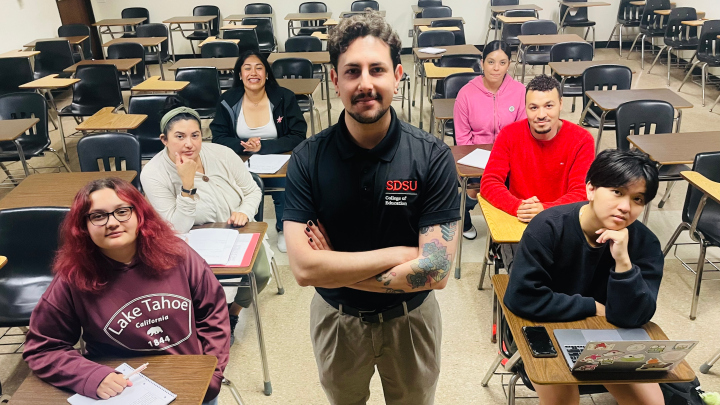Course seeks to combat ‘transfer shock,’ boost student success

When Jesse Ortiz was an undergraduate student, the term "transfer shock" was not yet in his vocabulary — but he felt it all the same. Ortiz, who grew up in the Mojave Desert community of Lancaster, California, remembers feelings of extreme isolation after transferring from Antelope Valley College to UCLA.
“I even questioned if college was right for me,” recalls Ortiz. “Even though I was only a couple hours away from my hometown, it felt like I was a million miles away.”
Now an undergraduate advisor in the San Diego State University College of Education’s Office for Student Success, Ortiz is teaching a course aimed at helping COE community college transfers find their footing quickly.
“My goal is to lessen that shock and ensure that the students who are coming into SDSU aren't reeling like I was," he said.
The 1-unit Gen S 350 class meets once a week on Wednesday and the curriculum runs the gamut. Lessons educate students about campus resources like academic advising and student wellness programs, hone their study skills and help them identify their reason for being part of the College of Education.
There are currently six liberal studies and child development students enrolled — a small number that Ortiz said helps him build community.
"I really like starting off classes by just asking them what they did over the weekend or what movies, shows, video games and books they're into,” he said. “It also gives me a chance to share about myself so I'm not just this lecturer, but I'm a human being like them.”
That includes sharing his own transfer experience.
For Ortiz, success at UCLA started with going to professor office hours to help him get a handle on his coursework. As his confidence grew, he started to explore student organizations and eventually served in student government for 2 ½ years.
A middle school history teacher before joining the COE advising team, Ortiz said he’s been very impressed with the big-picture focus of his students.
"A common theme I noticed is that they're asking for a lot of help from me in facilitating building connections with faculty,” he said. “They're very much focused on their career prospects. My guess is because they're transfer students, entering the workforce is closer to them than it would be for somebody who's going to be here for four years."
Another thing they have working in their favor: someone in their corner who understands.
"I tell them that if I can do it, anyone can do it," Ortiz says.

